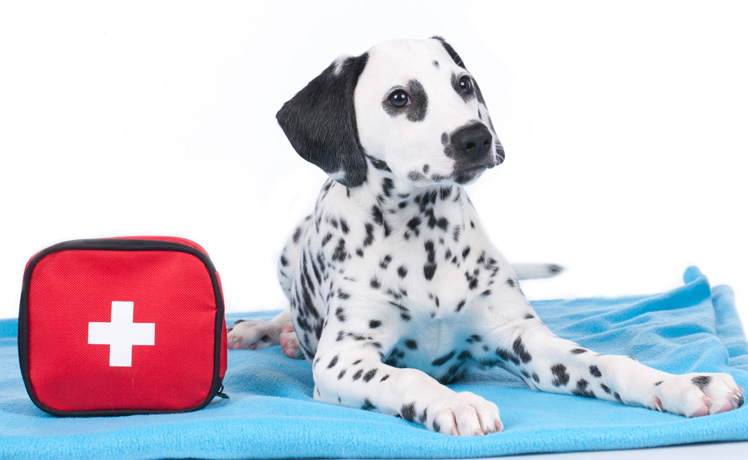Taking care of stray animals can be a challenging yet rewarding experience. One of the essential tasks for anyone involved in animal welfare is having a well-equipped first aid kit to handle common injuries and ailments. Let's see how can an effective first aid kit for stray animals be built, including the essential items and their uses, and steps to ensure proper wound care.
Essential Items for a Stray Animal First Aid Kit
-
Himax
- Use: Himax treats burns, allergies, and skin infections. It is effective in repelling flies and preventing maggot infestations.
- Suitability: Suitable for street dogs, but not for cats and birds.
- Application: Apply a thin layer on the affected area to soothe the skin and keep flies away.
-
Scavon
- Use: Scavon treats various wounds such as abrasions, cuts, lesions, lacerations, and incisions.
- Suitability: Suitable for street dogs, but not for cats and birds.
- Application: Clean the wound and apply Scavon to promote healing and prevent infections.
-
Neomycin Sulphate
- Use: Acts as an antibiotic, killing bacteria to heal minor wounds and prevent further infection.
- Suitability: Suitable for all animals.
- Application: Clean the wound and apply Neomycin Sulphate to prevent bacterial growth.
-
Lorexxane
- Use: Treats abrasions, scratches, superficial wounds, and sores. It is also a powerful fly repellant.
- Suitability: Not recommended for cats.
- Application: Apply to clean wounds to keep them protected from flies and aid in healing.
-
Negasunt
- Use: Antibacterial wound dressing that also prevents flies from laying eggs on open wounds.
- Suitability: Not recommended for cats.
- Application: Sprinkle on the wound to keep it dry and prevent fly infestation.
-
Merbromin
- Use: A topical antiseptic to treat minor wounds, burns, and scratches.
- Suitability: Suitable for all animals.
- Application: Apply to minor cuts and burns to prevent infection.
Additional Essential Items
-
Sterile Gauze and Bandages
- Use: To cover wounds and protect them from dirt and further injury.
- Application: After cleaning the wound, apply sterile gauze and secure it with a bandage.
-
Hydrogen Peroxide
- Use: For cleaning wounds and preventing infection.
- Application: Use to flush out debris from wounds before applying other treatments.
-
Tweezers
- Use: For removing splinters, ticks, and other foreign objects.
- Application: Sterilize before use to prevent infection.
-
E-Collar (Elizabethan Collar)
- Use: To prevent dogs from licking and biting their wounds.
- Application: Fit the collar around the dog’s neck to limit access to the affected area.
-
Digital Thermometer
- Use: To monitor the animal’s temperature in case of illness.
- Application: Use rectally for accurate readings.
-
Saline Solution
- Use: For cleaning wounds and flushing eyes.
- Application: Use a saline solution to irrigate wounds and remove debris.
-
Vet Wrap
- Use: Self-adhesive bandage for securing gauze without sticking to fur.
- Application: Wrap around the bandage to keep it in place.
-
Antibiotic Ointment
- Use: To prevent infection in minor cuts and wounds.
- Application: Apply a thin layer to clean wounds before bandaging.
-
Tick Remover
- Use: For safe and effective removal of ticks.
- Application: Use the tick remover to grasp and twist off the tick.
-
Pain Relievers (Vet-approved)
- Use: To alleviate pain in injured animals.
- Application: Administer as per veterinary guidelines.
-
Disposable Gloves
- Use: To maintain hygiene while treating wounds.
- Application: Wear gloves to avoid contamination.
-
Scissors
- Use: For cutting bandages and gauze to size.
- Application: Sterilize before use to ensure hygiene.
Preventing Licking and Further Injury
Using an E-collar is crucial to prevent dogs from licking and worsening their wounds. Additionally, ensure the following steps:
- Proper Bandaging: Secure bandages well enough to stay in place but not too tight to hinder circulation.
- Distracting the Animal: Provide toys or treats to keep the animal occupied and reduce the urge to lick wounds.
- Regular Monitoring: Check the wound regularly to ensure it is healing properly and the bandage is intact.
Building a comprehensive first aid kit for stray animals involves careful selection of suitable treatments and tools. Ensuring proper wound care and preventing further injury is vital for their recovery. By following these guidelines and being prepared with the right first aid supplies, you can make a significant difference in the lives of stray animals.
